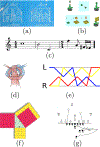The Child as Hacker
- PMID: 33012688
- PMCID: PMC7673661
- DOI: 10.1016/j.tics.2020.07.005
The Child as Hacker
Abstract
The scope of human learning and development poses a radical challenge for cognitive science. We propose that developmental theories can address this challenge by adopting perspectives from computer science. Many of our best models treat learning as analogous to computer programming because symbolic programs provide the most compelling account of sophisticated mental representations. We specifically propose that children's learning is analogous to a particular style of programming called hacking, making code better along many dimensions through an open-ended set of goals and activities. By contrast to existing theories, which depend primarily on local search and simple metrics, this view highlights the many features of good mental representations and the multiple complementary processes children use to create them.
Keywords: Computational modeling; Hacking; Language of thought; Learning and cognitive development; Program induction.
Copyright © 2020 The Authors. Published by Elsevier Ltd.. All rights reserved.
Figures




References
-
- Piaget J (1955) The Child’s Construction of Reality, Routledge & Kegan Paul.
-
- Carey S (1985) Conceptual Change in Childhood, MIT Press.
-
- Carey S (2009) The Origin of Concepts, Oxford University Press.
-
- Gopnik A (2012) Scientific thinking in young children: Theoretical advances, empirical research, and policy implications. Science 3376102, 1623–1627. - PubMed
-
- Schulz L (2012) The origins of inquiry: inductive inference and exploration in early childhood. Trends in Cognitive Sciences 167, 382–389. - PubMed

